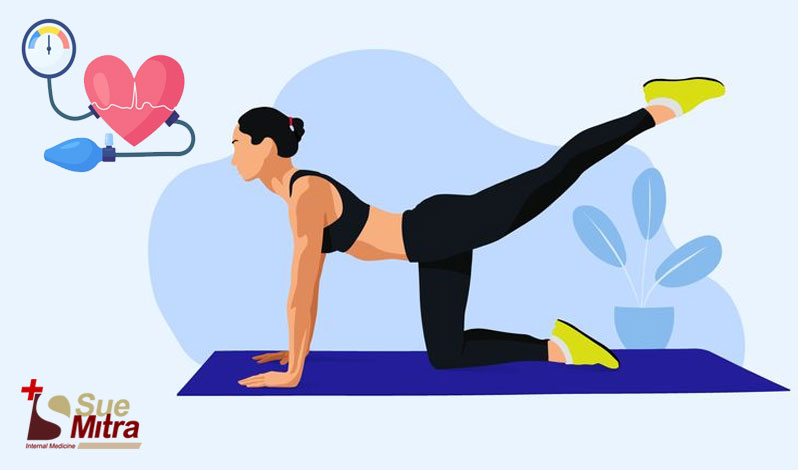
05, Jul 2024
Overview:
For cardiovascular diseases such as heart attacks and strokes, high blood pressure, or hypertension, is a leading risk factor that affects millions of women globally. It. Lifestyle factors, particularly physical activity, play a crucial role in both preventing and managing hypertension. This overview explores the specific benefits of exercise for women in combating high blood pressure and the mechanisms through which it exerts its effects.
1. Understanding High Blood Pressure in Women
· Prevalence and Risk Factors: Women, particularly postmenopausal women, are at increased risk for developing hypertension. Risk factors include age, obesity, genetics, stress, and a sedentary lifestyle.
· Health Implications: Untreated high blood pressure can lead to severe complications including heart disease, kidney damage, and stroke. For women, hypertension also poses unique risks during pregnancy, such as preeclampsia.
2. Preventive Role of Exercise
· Blood Pressure Reduction: Regular physical activity can help lower blood pressure by improving the efficiency of the cardiovascular system and reducing the resistance in blood vessels.
· Weight Management: Exercise helps in maintaining a healthy weight, which is crucial in preventing hypertension. Excess weight is a known risk factor for high blood pressure, and physical activity helps in both weight loss and maintaining a healthy body mass index (BMI).
· Stress Reduction: Physical activity is an effective stress reliever, which can contribute to lowering blood pressure. Stress management is particularly important for women, who may experience unique stressors related to family and work responsibilities.
3. Exercise in Managing High Blood Pressure
· Types of Beneficial Exercise: Both aerobic exercises (such as walking, cycling, and swimming) and resistance training (such as weight lifting) are beneficial in managing hypertension. A combination of these exercises is often recommended for optimal blood pressure control.
· Exercise Prescription: The American Heart Association recommends at least 150 minutes of moderate-intensity aerobic exercise per week, or 75 minutes of vigorous activity, along with muscle-strengthening activities on two or more days a week.
· Mechanisms of Action: Exercise improves endothelial function, increases nitric oxide production, enhances insulin sensitivity, and reduces sympathetic nervous system activity, all of which contribute to lower blood pressure.
4. Special Considerations for Women
· Hormonal Influences: Hormonal changes, particularly during menopause, can affect blood pressure and the effectiveness of exercise interventions. Regular physical activity can help mitigate some of the adverse effects of these hormonal changes.
· Pregnancy and Postpartum Period: Exercise is important during pregnancy to help control weight gain and blood pressure. Postpartum, it can assist in returning to pre-pregnancy weight and managing blood pressure levels.
· Cultural and Societal Factors: Women may face barriers to regular exercise, including time constraints due to caregiving responsibilities and lack of safe spaces for physical activity. Addressing these barriers is essential for effective hypertension management.
5. Implementation and Recommendations
· Individualized Exercise Programs: Exercise recommendations should be tailored to the individual’s health status, fitness level, and preferences to ensure adherence and effectiveness.
· Healthcare Provider Role: Physicians and healthcare providers should actively encourage and support women in incorporating regular physical activity into their lives as a strategy for preventing and managing high blood pressure.
· Community and Policy Support: Creating supportive environments that promote physical activity, such as safe walking paths and community fitness programs, is essential to encourage more women to engage in regular exercise.
Conclusion
Exercise is a powerful tool in the prevention and management of high blood pressure among women. By promoting cardiovascular health, aiding in weight management, and reducing stress, regular physical activity can significantly reduce the risk and impact of hypertension. Tailored exercise programs, supportive healthcare, and community initiatives are critical to ensuring that women can harness the benefits of exercise for their heart health.
Dr. Sue Mitra and her staff strive to offer their patients the best care, advice and services available in the medical field with the goal to keep patient healthy & happy.

Dr. Sue Mitra is board certified in international medicine. She is seen here with a Cologuard, which is a noninvasive colon cancer screening test. (Photo by: Tim Shortt/Florida Today)